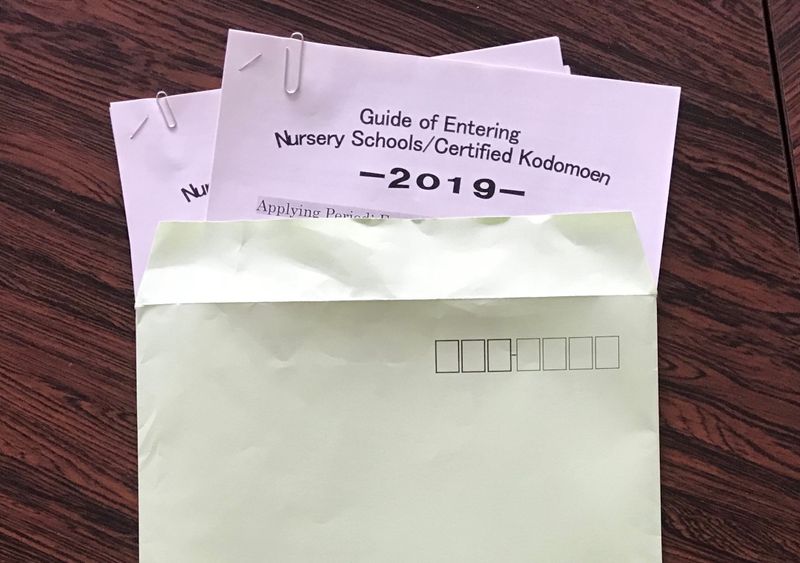Nov 16, 2018
A Quick Guide to Pre-school/Daycare Applications in Japan
It’s that time of year in Japan: preschool applications are due.

I’ve done it a few times now and realize that while it’s old hat for me now, it can be a little daunting for folks who are new to the process—I know it was for me that first time. So, allow me to walk you through the process with a few tips. Keep in mind that every city and school does it a bit differently, but I’ll try to keep it as general as possible.
First, a few notes:
1) Pre-school (yōchien) 幼稚園 vs. daycare (hoikuen) 保育園 vs. Mix (kodomoen) こども園
In Japan, there are generally three types of facilities for children aged 1-5, each with different features and requirements for enrollment. In the past, yōchien were the most common, since the government did not prioritize subsidization of daycare facilities and it was assumed that a parent or grandparent would be around to look after young children. Yōchien are for kids aged 3-5, and are similar to any standard pre-school in the U.S. or other western countries. Hoikuen have become more prevalent since the government realized that lack of daycare facilities are impacting population growth and the economy. Those daycare facilities will take children from 6 months to 5 years. Since subsidization for daycare facilities is increasing and number of children is decreasing, more and more yōchien are becoming mixed pre-school/daycare facilities commonly known as kodomoen. Those facilities accept children 6 months to 5 years and offer both types of services.
2) Public school vs. private school
I can’t speak to private schools in Japan except to say that they are expensive and exclusive. If you are seeking to send your child to a private yōchien, be sure to dress smartly, visit the school early, and research the requirements thoroughly.
3) Requisite working hours
Standard hours for yōchien are generally between 8:30 and 2:30. If you need your child to be at school longer, you need to prove that both you and your spouse are unable to provide care for extended periods due to school or work. For daycare from 8:30-2:30, my city requires both parents to be working at least 64 hours a month. For 6:30 to 5:30 care, the city requires 120 hours a month.
4) Tuition/Fees payment
Even public schools cost money here, which is paid through the city office. Tuition varies based on income, which will be determined by your previous year’s tax returns. If you did not have an income in Japan the previous year, you’ll have to work it out with the school and/or city office based on your current financial circumstances.
Process:
Step 1: Get the application forms
This is straightforward in most cases—get the forms from a school or the city office. Still, for some popular schools, they’ll require you to attend Information Sessions (説明会) in order to get school specific forms and instructions.
Step 2: Gather the required documents
At the very least, you’ll need the school application forms and a job certificate (or student certificate, if you’re attending school here). The certificates should be obtained from your place of employment or education, and make sure there is a hanko stamped on there otherwise the city office can’t accept it!
Step 3: Create a list of preferences for the local schools
Just because a school is closest doesn’t mean your child will get to go there. You’ll need to scope out the different schools in the area and rack and stack them. You’ll put that priority list on the form and the city office will decide which school/daycare your child will attend based on availability, proximity, and preference.
Step 4: Fill in the paperwork
Step 5: Submit the paperwork
The paperwork will generally be submitted at the school of choice. If not, you will have to submit it directly to the city office.
If you have any additional questions, feel free to use the comments section below!
Hitting the books once again as a Ph.D. student in Niigata Prefecture. Although I've lived in Japan many years, life as a student in this country is a first.
Blessed Dad. Lucky Husband. Happy Gaijin (most of the time).



0 Comments